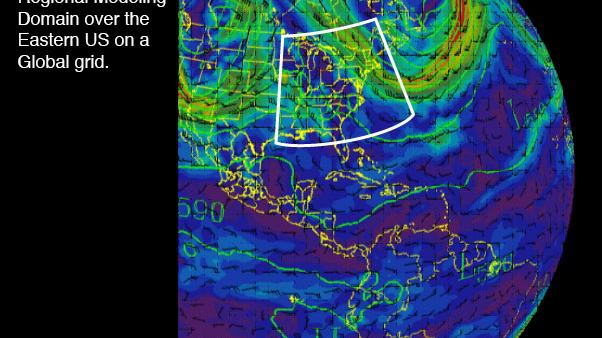UC Davis researchers determine lightness of water vapor should not be excluded from climate models
By LILLY ACKERMAN — [email protected]
A recent study researchers from the Department of Earth, Atmospheric and Aquatic Resources at UC Davis determined that the lightness of water vapor in the atmosphere has significant impacts on clouds and temperature, and should not be overlooked in climate modelling.
Climate models are an important tool for simulating atmospheric conditions that help predict climate change trends. However, not all climate models include the same variables in their equations.
Seth Seidel, study co-author and Ph.D. student in the Atmospheric Sciences Graduate Group at UC Davis explained the buoyancy of vapor, a variable that was the focus of the study.
“The buoyancy of vapor comes from the fact that the molecular weight of water vapor is somewhat lower than that of dry air,” Seidel said. “So if you take air that is otherwise dry and mix water vapor molecules […] it will be less dense. It will be lighter and more buoyant.
This means that wetter areas of the atmosphere have a slightly lower air density than drier areas. According to Siedel, prior to this study, some large climate models chose not to include vapor buoyancy as a variable in their governing equations due to its minimal effects on air density.
“Buoyancy governs vertical movements [in the atmosphere] and is therefore one of the most fundamental quantities for understanding atmospheric circulations, clouds and climate. study bed. “However, water vapor is a trace gas in the Earth’s atmosphere, so [vapor buoyancy] has traditionally been considered small and often overlooked in studies of climate dynamics.
Using reanalysis data and atmospheric models, the authors determined that vapor buoyancy has effects beyond simple differences in air density. It also increases atmospheric temperature in the tropical troposphere, the lowest layer of the atmosphere, and increases low cloud fraction, or the amount of low cloud cover, in subtropical regions.
“The two quantities [temperature and low cloud fraction] affect the Earth’s energy balance and climate,” study bed. “These biases can be amplified with [global] warming due to increased water vapor and then contribute to uncertainties in predicting future climate change.
An increase in the amount of low cloud cover is a particularly crucial effect of vapor buoyancy that can strongly influence other climatic factors, including falling temperatures. This is why failure to accurately simulate clouds can lead to a cascade of other inaccuracies that can render a model unreliable.
“Clouds play a vital role in Earth’s energy balance […] Therefore, modeling clouds faithfully is necessary to improve our climate projections,” Seidel said via email. “[Vapor buoyancy] increases the amount of low clouds (“low cloud fraction”), likely increasing their cooling effect on the Earth’s surface.
With this discovery of the importance of vapor buoyancy in climate modeling, the authors show that models that include vapor buoyancy can be more accurate and those that do not should consider doing so to predict. specifically climate change trends.
Additionally, the study found that rising air in the tropics is cooler than ambient air due to the warming effects of vapor buoyancy on the tropical atmosphere. This is an exception to the fact that warm air rises and demonstrates the importance of the effects of vapor buoyancy on the atmosphere.
“We hope to build a body of evidence to help persuade the modeling community to include this in their models,” Seidel said. “What this will hopefully give us is a more physically accurate set of climate models in the future.”
Written by: Lilly Ackerman — [email protected]




